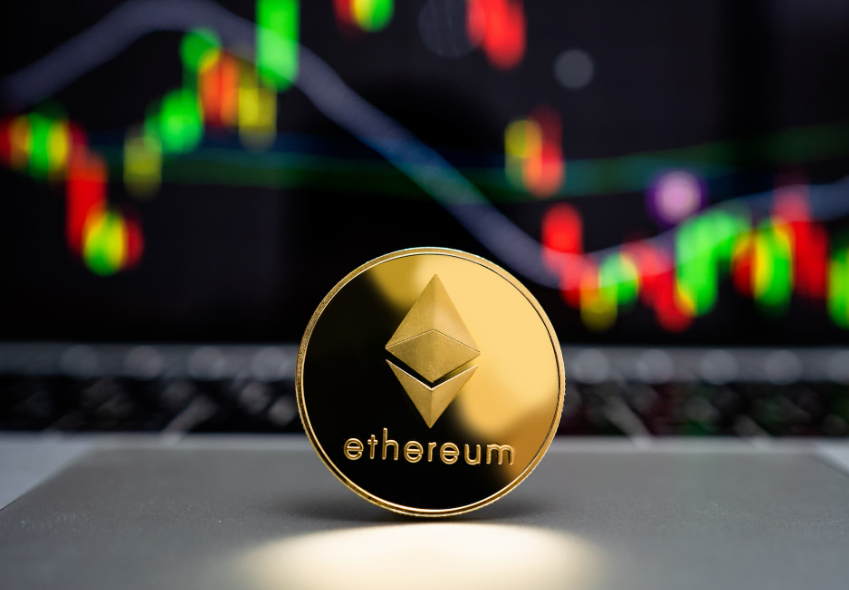Ethereum Blockchain Competitors And Their Unique Advantages
Exploring ethereum blockchain competitors reveals a vibrant and rapidly evolving ecosystem where innovative technologies are reshaping the future of decentralized applications. As Ethereum has paved the way for smart contracts and decentralized finance, several other platforms have emerged, each offering distinctive features aimed at enhancing user experience and scalability.
This landscape includes notable contenders like Cardano, Solana, and Polkadot, each with its own technological advancements and applications that cater to diverse market needs. By understanding these competitors, we gain valuable insights into their unique propositions that attract developers and users alike.
Overview of Ethereum Blockchain Competitors
The blockchain landscape is rapidly evolving, with various platforms emerging as formidable competitors to Ethereum, the pioneer of smart contracts. These platforms are not just alternatives; they bring unique features and functionalities that cater to different market needs. In this section, we will explore some of the major players in the blockchain arena, examining how they differentiate themselves from Ethereum in terms of technology and applications.Key competitors to Ethereum include Cardano, Solana, and Polkadot.
Each of these platforms offers distinct features that appeal to users and developers alike. For instance, Cardano emphasizes a research-driven approach with a strong focus on security and scalability. Solana, on the other hand, is renowned for its high transaction speeds and low costs, making it an attractive option for developers building decentralized applications (dApps). Polkadot aims to facilitate interoperability between different blockchains, creating a multi-chain ecosystem that allows seamless communication.
Comparative Analysis of Blockchain Platforms
To provide a clearer understanding of how Ethereum stacks up against its competitors, a comparative analysis of key features is essential. Below is a detailed comparison table highlighting the features of Ethereum, Cardano, Solana, and Polkadot.
| Feature | Ethereum | Cardano | Solana | Polkadot |
|---|---|---|---|---|
| Consensus Mechanism | Proof of Work (transitioning to Proof of Stake) | Ouroboros (Proof of Stake) | Proof of History combined with Proof of Stake | Nominated Proof of Stake |
| Transaction Speed | ~15 TPS | ~250 TPS | ~65,000 TPS | ~1,000 TPS (varies by parachains) |
| Smart Contracts | Yes (Ethereum Virtual Machine) | Yes (Extended UTXO model) | Yes (Rust and C-based languages) | Yes (Substrate framework) |
| Scalability Solutions | Layer 2 Solutions (e.g., Optimistic Rollups) | Hydra scaling solution | Cluster-based architecture | Parachains |
This comparison illustrates significant differences in transaction speeds and scalability solutions across the platforms. While Ethereum has been a leader in smart contracts, its competitors have developed advanced consensus mechanisms that enhance their performance.
Smart Contract Capabilities

Ethereum is well-known for its robust smart contract functionalities, enabling developers to create decentralized applications easily. However, its competitors are stepping up with unique smart contract features that differentiate them. Cardano utilizes an extended UTXO model, allowing for more secure and reliable smart contracts. Solana's runtime supports multiple programming languages, which broadens developer accessibility.Use cases for alternative platforms highlight their advantages.
For example, Solana has been particularly successful in the decentralized finance (DeFi) space, offering rapid transaction processing that is essential for trading platforms. Cardano has made strides in academic research applications, emphasizing a structured approach to smart contract development.
Development Ecosystem and Community Support

The developer communities surrounding these blockchain platforms play a critical role in their success. Ethereum boasts a large, vibrant community with extensive resources, including documentation, tutorials, and support forums. In contrast, Cardano's development community is more structured, with a focus on formal verification and peer-reviewed research.Resources available for developers vary across platforms. Ethereum provides tools like Truffle and Hardhat for dApp development.
Cardano offers Plutus and Marlowe for building smart contracts, while Solana's ecosystem includes libraries and SDKs for easy integration with existing applications. The number of projects and dApps developed on Ethereum far exceeds those on its competitors, but the gap is narrowing as more developers explore alternative platforms.
Regulatory and Compliance Considerations
The blockchain industry faces numerous regulatory challenges, impacting Ethereum and its competitors differently. Ethereum has encountered scrutiny over securities regulations, particularly concerning token classifications. Cardano and Polkadot have implemented more rigorous compliance frameworks to navigate these issues.Each platform addresses compliance through various strategies. For instance, Solana has focused on building relationships with regulators to ensure clarity in its operations. The implications of regulation on blockchain adoption are significant, as platforms that can demonstrate compliance are likely to gain a competitive edge.
Future Trends in the Blockchain Space

Emerging trends in blockchain technology could reshape the competitive landscape for Ethereum and its rivals. The rise of interoperability solutions, such as those offered by Polkadot, is expected to facilitate cross-chain functionalities. Additionally, advancements in Layer 2 scaling solutions will enhance transaction speeds and reduce costs on platforms like Ethereum.Predictions for technological advancements suggest that we may see enhanced privacy features and more efficient consensus mechanisms.
Potential partnerships and collaborations, such as those between blockchain platforms and traditional financial institutions, could further enhance capabilities and drive adoption.
Case Studies of Successful Competitors
Several successful projects built on alternative blockchain platforms showcase their impact on various industries. For instance, Serum on Solana has revolutionized decentralized exchanges with its speed and low transaction costs, outperforming Ethereum-based solutions in certain aspects. In contrast, Cardano's partnership with the Ethiopian government to create a blockchain-based school record system exemplifies its unique use case in the education sector.
These case studies highlight the potential of competitors and provide valuable lessons for Ethereum developers looking to innovate and expand their applications.
Ultimate Conclusion
In summary, as we navigate the competitive landscape of blockchain technology, it becomes clear that Ethereum’s rivals offer compelling alternatives that continue to challenge its dominance. The innovations and developments among these platforms hold the promise of shaping a decentralized future that is not only efficient but also accessible to a broader audience.
FAQ
What makes Ethereum different from its competitors?
Ethereum focuses on a robust ecosystem for smart contracts, while competitors may prioritize transaction speed or scalability.
Are Ethereum competitors more scalable?
Many competitors, like Solana, emphasize high transaction speeds and scalability solutions, often outperforming Ethereum in these areas.
Do competitors have better developer support?
While Ethereum has a large community, some competitors like Cardano are building strong ecosystems to attract developers with new tools and resources.
How do regulatory challenges affect Ethereum and its competitors?
Each platform faces unique regulatory hurdles, and their approaches to compliance can influence market adoption and user trust.
What future trends could impact blockchain competitors?
Emerging trends like interoperability, environmental sustainability, and enhanced security features are likely to influence the competitive dynamics in the blockchain space.

